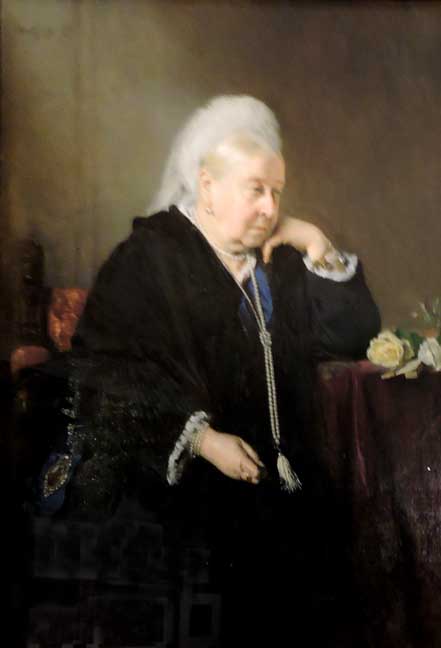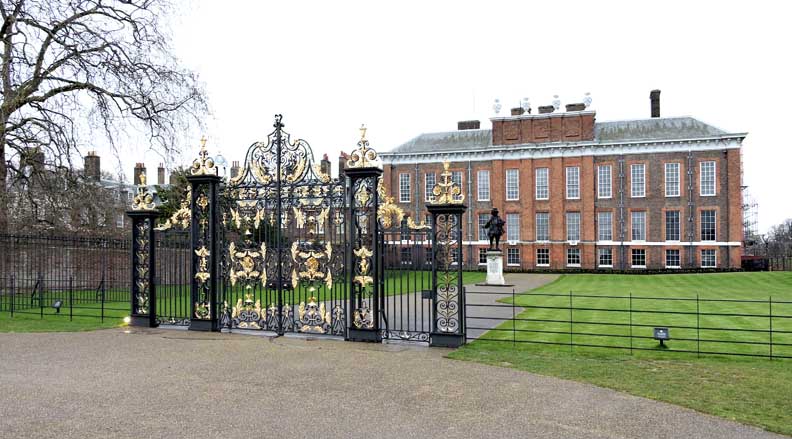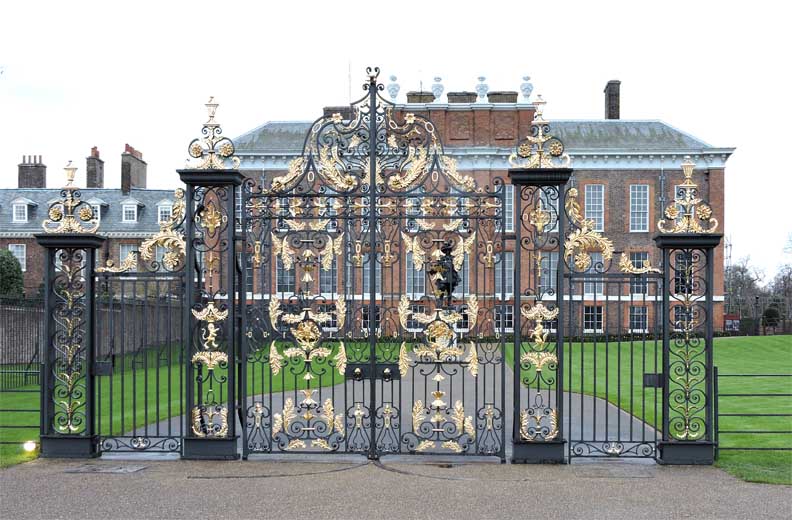Queen Victoria Portraits at Kensington Palace
London, England
 Queen Victoria  Queen Victoria  Queen Victoria  Prince Albert |
    |
|
Early Life Queen Victoria served as Queen of Great Britain and Ireland from 1837, and as empress of India from 1877, until her death in 1901. She was born Alexandrina Victoria on May 24, 1819, in London, England, the only child of George III's fourth son, Edward, and Victoria Saxe-Saalfield-Coburg, sister of Leopold, king of the Belgians. Victoria’s father died when she was eight months old and her mother became a domineering influence in her life. As a child, she was said to be warmhearted and lively. Educated at the Royal Palace by a governess, she had a gift for drawing and painting and developed a passion for journal writing. Upon her father’s death, Victoria became the heir apparent, since her three surviving uncles, who were ahead of her in succession, had no legitimate heirs who had survived childhood. When King William IV died in June 1837, Victoria became queen at the very young age of 18. Victoria’s first prime minister, Lord Melbourne, was her political advisor and confidant and helped teach the young queen the intricacies of being a constitutional monarch. A Marriage Partnership In 1840, she married her cousin, Prince Albert of Saxe-Coburg and Gotha. At first, the British public didn't warm up to the German prince and he was excluded from holding any official political position. At times their marriage was tempestuous, a clash of wills between two extremely strong personalities. However, the couple were intensely devoted to each other and shared a strong enough affection to have nine children. Prince Albert also became her strongest ally, helping her navigate difficult political waters. In 1861, Victoria's beloved prince died of typhoid fever after several years of suffering from stomach ailments. Victoria was devastated and went into a 25-year seclusion. Queen of the United Kingdom of Great Britain and Ireland Under Queen Victoria's reign, Great Britain experienced unprecedented expansion in industry, building railways, bridges, underground sewers and power distribution networks throughout much of the empire. There were advances in science (Charles Darwin's theory of evolution) and technology (the telegraph and popular press), vast numbers of inventions, tremendous wealth and poverty; growth of great cities like Manchester, Leeds and Birmingham; increased literacy; and great civic works, often funded by industrial philanthropists. During her reign, Britain expanded its imperial reach, doubling in size and encompassing Canada, Australia, India and various possessions in Africa and the South Pacific. The Queen was emblematic of the time: an enthusiastic supporter of the British Empire, which stretched across the globe and earned the adage: “The sun never sets on the British Empire.” At various points in her reign, Queen Victoria exercised some influence over foreign affairs, expressing her preference, but not pressing beyond the bounds of constitutional propriety. During this time, the British Empire experienced only a few small wars, exerting its authority over foreign possessions. One of the major factors that helped Britain avoid European entanglements was the marriage of Victoria's children: either directly or by marriage, she was related to the royal houses of nearly every major European power, with the exceptions of France and Spain. Though the English constitutional arrangement denied her powers in foreign affairs, she ruled her family with an iron hand that helped keep Great Britain away from the intrigues of European politics. Death and Legacy Life in Britain during the 19th century was known as Victorian England because of Queen Victoria’s long reign and the indelible stamp it and her persona placed on the country. Her ethics and personality have become synonymous with the era. |